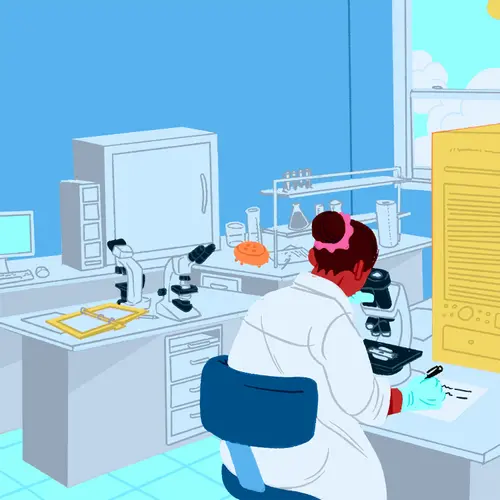Getting pregnant is a pretty complicated process. At the very least, a man’s sperm has to join with a woman’s egg in order to fertilize it. But sometimes that can’t happen. There are several possible reasons, one of which could be a blocked fallopian tube.
The fallopian tubes connect your ovaries to your uterus, the womb where a baby grows. After an egg is released from your ovary, it travels down your fallopian tube to get to your uterus.
Your ovary usually releases an egg every month, and sperm can fertilize it while it’s traveling through your fallopian tubes. But if your fallopian tubes are blocked, fertilization can’t happen because the sperm and egg can’t meet.
There are many treatments to open up these blockages in your fallopian tubes. Some are surgical, and some are not. You and your doctor should discuss which is right for your situation.
Fallopian Tube Recanalization (FTR)
FTR reopens your fallopian tubes if they’re blocked. It doesn’t require surgery.
How it’s done. Your doctor won’t need to make any cuts during FTR. They’ll use a speculum, which is a tool to keep your vagina open, and then insert a small plastic tube, or catheter through your cervix into your uterus.
Next they’ll inject a contrast liquid through the catheter, and take an X-ray of your uterus and fallopian tubes to see where the blockage is. Finally, they’ll insert a second, smaller catheter to clear the blockage.
In general, this procedure is done in a limited number of patients with certain types of tubal blockage.
Risks. There are several risks associated with this procedure. First, because the procedure uses X-ray dye and radiation, there can be problems. The catheter your doctor uses could also make a hole in your fallopian tube, which could lead to infection or require surgery to repair.
There’s also a chance you could have an ectopic pregnancy after the procedure, meaning your fertilized egg implants somewhere other than your uterus. Ectopic pregnancies can be dangerous and even life-threatening. There’s also a chance that your tubes could get blocked again.
Tubal Ligation Reversal Surgery
If you had your fallopian tubes cut or blocked to prevent pregnancy, you can try to undo the procedure with tubal ligation reversal surgery. It will allow your eggs to travel through your tubes again by reconnecting the parts of the tubes that were blocked or cut.
How it’s done. Your doctor will give you general anesthesia for the procedure, meaning you won’t be awake. They’ll make a small cut in your abdomen and remove any blocked parts of your fallopian tubes. They’ll use absorbable stitches to reconnect the tubes.
Risks. Even if you have the surgery, there’s no guarantee you’ll become pregnant. Your chances can range anywhere from 40% to 80%, depending on your age and other health factors.
Because tubal ligation reversal is abdominal surgery, infection, bleeding, and injury to other organs are possible. There are also risks to having anesthesia. Ectopic pregnancy also becomes a possibility after a tubal ligation reversal.
Salpingostomy (Neosalpingostomy)
Salpingostomy, sometimes called neosalpingostomy or fimbrioplasty, is when your doctor creates an opening in your fallopian tube. The blocked and swollen tube, called a hydrosalpinx, is usually filled with fluid.
How it’s done. During the surgery, your doctor will open your fallopian tube and remove the blockage but leave the tube in place. They will leave the incision open so it heals on its own.
Risks. As always, infection is possible. You also could have scarring, or adhesions, on your reproductive organs, and your chances of having an ectopic pregnancy go up after surgery.
Salpingectomy
Unlike the salpingostomy procedure, which repairs your blocked fallopian tube and leaves it intact, the salpingectomy actually removes it during surgery. Your doctor might recommend bilateral salpingectomy, or removal of both fallopian tubes, to improve your chances for in vitro fertilization.
How it’s done. There are a few ways your doctor can perform laparoscopic salpingectomy. One way is to use a pre-tied surgical loop and tighten the knot around the fallopian tube to remove it. Another way is to destroy the blood vessels in the fallopian tube.
Risks. Infection and scarring are things to consider, and your chances of having an ectopic pregnancy after surgery go up.
Fimbrioplasty
Your doctor might suggest a fimbrioplasty procedure if you have blockage in the part of your fallopian tube that’s closest to the ovary. This procedure opens the blocked tube and saves tissue known as the fimbriae so that your eggs can move through the tube.
How it’s done. The fimbriae are small projections at the ends of the fallopian tubes that act like fingers to pick up the egg once the ovary releases it. Fimbrioplasty is usually done as part of salpingostomy, but in addition to your doctor clearing the blockage in your tube, they will also rebuild the fimbriae.
Risks. You can end up with scarring, or adhesions, on your reproductive organs, and infection is always a possibility. Ectopic pregnancy is also more likely if you become pregnant.

